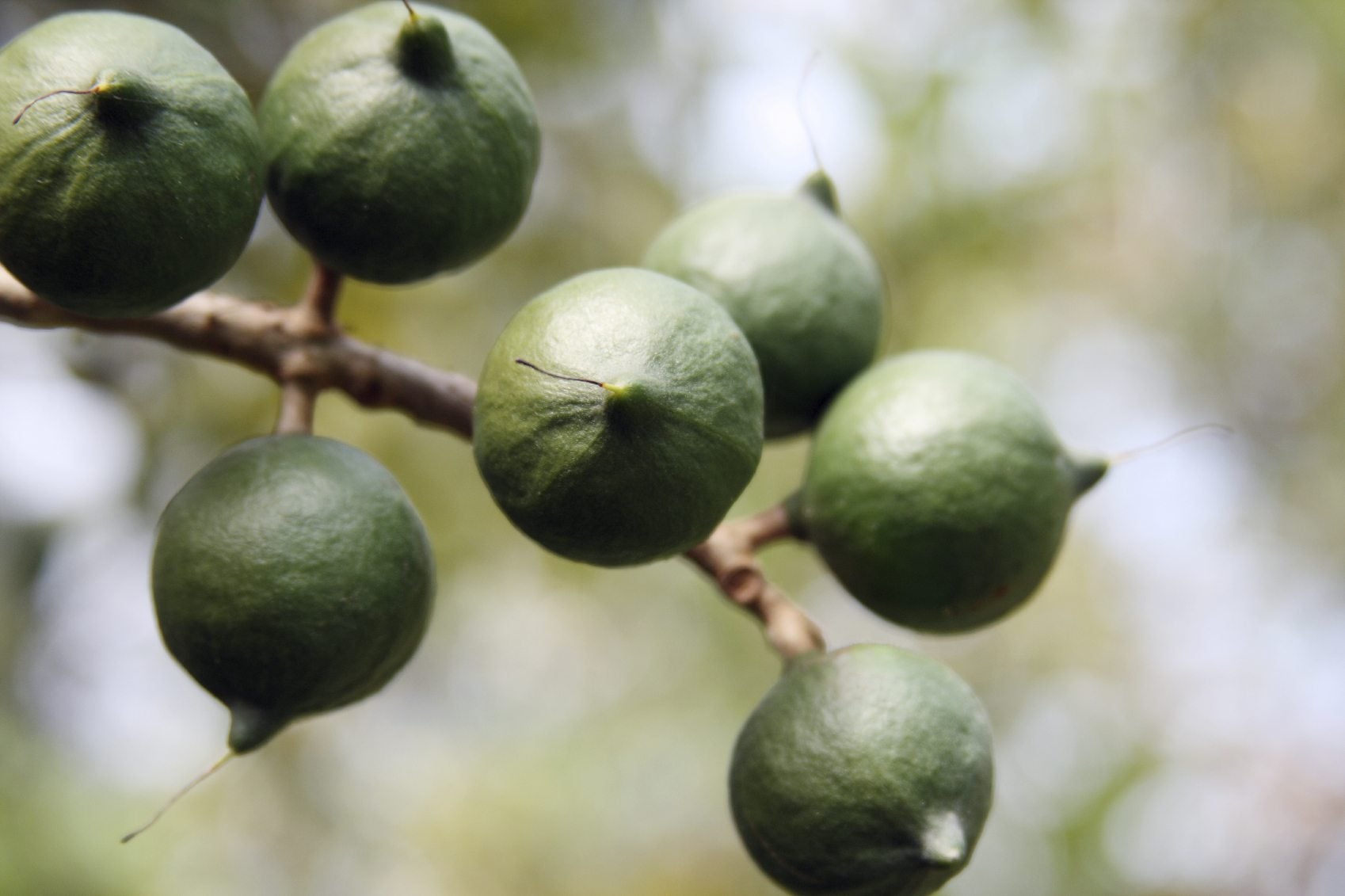Macadamia Plant Care: How To Grow Macadamia Trees


The beautiful macadamia tree is the source of expensive but richly flavored nuts prized for their sweet, soft meat. These trees are warm region plants only, but growing macadamia nuts in southern California and other areas with tropical climates is possible. If you are lucky enough to live in one of these tropical climes, knowing how to grow macadamia trees successfully can provide you with a lifetime supply of these desired nuts. Macadamia nut trees can begin bearing in 6 to 7 years, so it is important to put a little time and effort into the tree's care for the first phase of its life.
How to Grow Macadamia Nut Trees
Who wouldn't want to try growing a macadamia tree? These ornamental plants provide a lovely foil for other tropical vegetation and add interest with glossy leaves and thick clusters of white to pink flowers. Northern gardeners will have to keep their plant in a heated greenhouse for much of the year and container grown plants are not likely to produce nuts, but the attractive tree is enough of a boon as a tropical accent. Growers in southern regions can plant outdoors and find themselves hip deep in nuts over time. Macadamia nut trees cannot tolerate any sort of freeze and produce the best yields in areas with high humidity and rainfall. The southern California coast affords just such an area as does Hawaii, Florida, and parts of Australia. These plants thrive in deep, well-drained soil where moisture is plentiful and some protection from harsh winds is provided. Most commercial trees are bred off of rootstocks that increase plant health and resistance to pest and diseases but you can try planting macadamia seeds for a chance at a bearing tree. Growing macadamia nuts is a fun way to inexpensively start a tree and see if it will thrive in your area. Seeds must be fresh before sowing and healthy for the best chance of germination.
Planting Macadamia Seeds
Growing macadamia nuts from seed is not difficult but you will find the resulting trees to be variable. They may not produce fruit or they may produce a slightly inferior nut to the parent tree. However, you might get lucky and get a fruiting tree in 5 to 10 years. Check your seed’s viability by putting it in water. If the seed sinks, has a tight kernel, and a light caramel coated shell, the chances of germination are higher. Use well-drained soil in small, but deep pots, to accommodate the taproot. Insert the healthy seed with the bud end oriented horizontally. Planting macadamia nut seeds in this manner allows the taproot to form properly. Some growers swear by soaking the seed overnight in water to help germination while others state this is not necessary. It seems worth a try since the process is very simple.
Macadamia Plant Care
Once germination has taken place, it is important to keep the seedling warm and lightly but evenly moist. After the plant has several pairs of true leaves, you can transplant it to a deeper, wider pot or plant it in the ground in warm climates. Macadamias perform well in any soil provided it is loose and has a pH of at least 4.5 to 8.0. Side dressings of nitrogen and potassium are necessary for healthy plants, but choose fertilizers with low levels of phosphorus. This is because the trees are native to Australia where soils are low in phosphorus. Fertilize the plant in spring. Pruning should be done at the end of winter. These trees are a long term project because they don't fruit for years, but with careful macadamia plant care, you may get lucky and have a bearing plant from seed in half a decade or so and that would be something to crow about to your friends and neighbors.
Sign up for the Gardening Know How newsletter today and receive a free copy of our e-book "How to Grow Delicious Tomatoes".

Bonnie Grant is a professional landscaper with a Certification in Urban Gardening. She has been gardening and writing for 15 years. A former professional chef, she has a passion for edible landscaping.